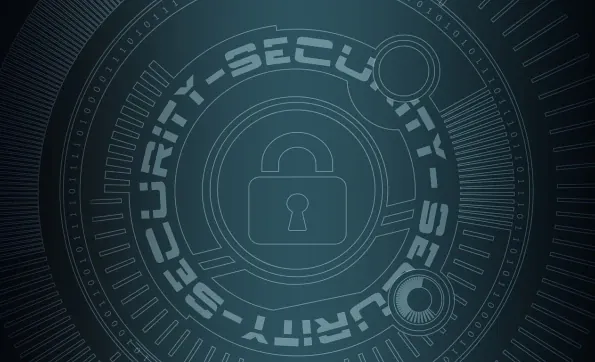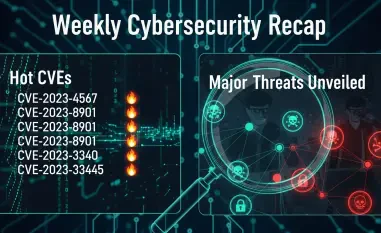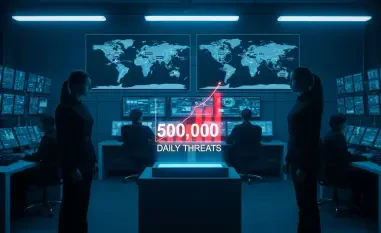In the rapidly evolving cybersecurity landscape, effective communication has become a cornerstone for marketing success. As cyber threats grow increasingly sophisticated, cybersecurity providers must maintain clear, proactive, and consistent communication with clients to build trust and demonstrate expertise. This article explores how effective communication can significantly enhance cybersecurity marketing efforts by addressing the complexities of cyber threats and aligning messaging strategies effectively.
The Importance of Clear Communication
Simplifying Complex Threats
One of the biggest challenges in cybersecurity marketing is explaining complex threats in a way that clients can easily comprehend. With cyber threats becoming more intricate and multifaceted, the ability to break down these threats into understandable terms has never been more critical. Avoiding technical jargon and presenting the real-world implications of new attack types can help clients grasp the severity and nature of the risks they face. For example, instead of merely mentioning a term like “phishing,” providing a real-world scenario of how a phishing attack can compromise sensitive data makes the threat more relatable and urgent.
In addition to making threats understandable, clear communication also involves educating clients on preventive measures and response strategies. By offering straightforward, actionable advice on how clients can protect themselves against cyber threats, providers position themselves not just as service suppliers but as trusted advisors. This approach not only enhances the client’s understanding of the threat landscape but also fosters a sense of preparedness and confidence in their cybersecurity defenses. Ultimately, simplifying complex threats through clear communication helps bridge the gap between technical experts and non-technical clients, ensuring everyone is on the same page.
Building Trust Through Transparency
Proactive transparency is another key element of effective communication and essential for fostering a strong relationship between cybersecurity providers and their clients. Instead of merely reacting to cyber incidents, addressing emerging threats directly and detailing how the company is preparing to mitigate them builds a foundation of trust. When clients feel informed and reassured, they are more likely to view the provider as a reliable partner in their cybersecurity efforts. This transparency also involves being open about the limitations and challenges in combating certain types of cyber threats, which can further enhance the provider’s credibility.
Transparency does not only involve communication during crises but also during routine interactions. Regularly updating clients on security posture, emerging threats, and new security measures instills confidence and demonstrates the provider’s ongoing commitment to safeguarding their interests. This could involve newsletters, webinars, or even face-to-face meetings where clients are briefed on the latest developments in cybersecurity. By maintaining a consistent and open dialogue, providers can ensure that clients are never left in the dark and always feel supported in their cybersecurity journey.
Consistent Messaging Across Channels
Aligning Communication Touchpoints
Consistency in messaging is vital for maintaining credibility and reinforcing the provider’s expertise and reliability. In a world where clients are bombarded with information from multiple sources, ensuring that messages are aligned across all communication touchpoints, including social media, thought leadership, and advertisements, is crucial. This alignment creates a cohesive narrative that clients can trust and rely on. For instance, a cybersecurity provider’s blog posts should resonate with the messages shared on their social media pages and through their email newsletters, ensuring that there is no confusion or mixed signals.
Moreover, consistency in messaging also helps in establishing a strong brand voice. A unified message across various platforms reflects the provider’s professionalism and commitment to quality. It shows that the company speaks with one voice and has a clear, unwavering stance on cybersecurity issues. This consistency not only enhances credibility but also makes the provider more recognizable and memorable. Clients are more likely to remember and trust a provider whose messaging is consistent and reliable across different channels.
Value-Driven Content
Focusing on delivering value-driven content is essential for gaining clients’ trust and demonstrating the provider’s commitment to their security. Content that offers actionable advice for improving clients’ security posture against emerging threats, rather than self-promotion, shows that the provider truly cares about their clients’ well-being. For example, a blog post that provides step-by-step instructions on how to secure a network against specific types of attacks is much more valuable than one that merely boasts about the provider’s capabilities.
Value-driven content also involves staying current with the latest trends and developments in cybersecurity. Regularly publishing insightful articles, case studies, and research findings not only educates clients but also positions the provider as a thought leader in the industry. This approach helps build trust and credibility, making clients more likely to turn to the provider for guidance and support. By consistently delivering valuable content, cybersecurity providers can establish themselves as indispensable resources in an increasingly uncertain digital landscape.
Leveraging Various Communication Channels
Press Releases for Wide Visibility
Press releases are an effective way to achieve wide visibility with media outlets and influencers, and they serve as a powerful tool in the cybersecurity marketing arsenal. Strategically announcing new product features, threat research findings, and industry recognitions through press releases can help position the provider as a thought leader in the cybersecurity space. For instance, promoting new AI-powered detection capabilities or highlighting groundbreaking research on emergent threats can attract significant attention and enhance the provider’s reputation.
Beyond just reaching the media, press releases can also be directed at industry influencers who can amplify the message to a broader audience. These influencers often have a large following of industry professionals and decision-makers who trust their insights and recommendations. By securing coverage and endorsements from these influencers, cybersecurity providers can significantly boost their visibility and credibility. Additionally, well-crafted press releases can serve as valuable content for the provider’s own platforms, such as their website and social media channels.
Thought Leadership Content
Publishing thought leadership content, such as articles, blogs, and columns under executive bylines in top cybersecurity trade outlets, is a powerful communication strategy that can significantly enhance a provider’s credibility. Sharing insights on emerging threats, impact forecasts, and strategies to mitigate risks positions the provider as an expert in the field. This type of content not only educates the audience but also demonstrates the provider’s deep understanding of the cybersecurity landscape and their proactive approach to addressing threats.
Developing in-depth white papers examining specific threats or cybersecurity trends can further enhance the provider’s authority. These white papers can then be syndicated across various channels, including industry forums, webinars, and conferences, to reach a wider audience. By consistently contributing high-quality thought leadership content, providers can build a reputation as trusted advisors and innovators in the industry. This approach not only attracts potential clients but also fosters long-term relationships with existing ones, who view the provider as a valuable source of knowledge and guidance.
Engaging Video Content
Video content is an excellent medium for breaking down complex cyber threats in an easy-to-understand manner, making it an essential tool for effective communication in cybersecurity marketing. Creating animated explainers, motion graphics, executive interviews, and virtual panels can engage viewers and promote understanding of intricate cybersecurity concepts. These videos can simplify complicated topics, such as the mechanics of a specific type of malware or the impact of a recent cyber attack, making them accessible to a broader audience.
Incorporating clear calls to action in video content can drive further engagement and interaction with the provider’s offerings. For instance, viewers can be encouraged to visit the provider’s website for more detailed information, sign up for a webinar, or download a white paper. Video content can also be shared across multiple platforms, such as YouTube, social media, and the provider’s website, maximizing reach and visibility. By leveraging video content effectively, cybersecurity providers can enhance their communication efforts, making complex information more digestible and engaging for their audience.
Social Media Conversations
Using platforms like Twitter and LinkedIn to have approachable conversations with customers about emerging cybersecurity issues is crucial for building a sense of community and trust. Social media allows for real-time interactions, enabling providers to share insights from threat research, discuss innovations in cybersecurity, and gather feedback on topics of interest. These platforms offer a direct line of communication with clients, fostering a two-way dialogue that can enhance understanding and support.
Engaging with clients on social media also allows providers to address concerns promptly and demonstrate their commitment to customer service. By actively participating in discussions and responding to queries, providers can show that they are attentive and responsive to their clients’ needs. Additionally, social media can be used to share success stories, client testimonials, and case studies, further reinforcing the provider’s credibility and expertise. By maintaining an active and engaging presence on social media, cybersecurity providers can strengthen their relationships with clients and build a loyal following.
Addressing Emerging Cybersecurity Threats
AI-Powered Attacks
Cybercriminals are increasingly leveraging artificial intelligence to enhance their malicious activities, making AI-powered attacks one of the most significant emerging threats in the cybersecurity landscape. These attacks can involve the use of AI to develop sophisticated malware, automate large-scale attacks, and spread disinformation at an unprecedented scale. Effective communication about these threats is essential for reassuring clients and demonstrating the provider’s preparedness in countering such advanced attacks.
Communicating the provider’s strategies for defending against AI-powered attacks involves detailing the technologies and methodologies used to detect and mitigate these threats. This could include the use of AI and machine learning to identify patterns of suspicious activity, the implementation of advanced threat detection systems, and the continuous monitoring of networks for signs of compromise. By providing clients with detailed information on how they are protected against AI-powered attacks, providers can foster a sense of security and trust.
Web3 and Cryptocurrency Exploits
The rise of decentralized systems like Web3 and the increasing value of cryptocurrencies present attractive targets for cybercriminals seeking substantial financial gains. Communicating the provider’s expertise in mitigating these specific threats is crucial for building trust with clients who are concerned about their digital assets. Effective communication involves explaining the unique vulnerabilities associated with Web3 and cryptocurrencies and how the provider’s solutions address these challenges.
For instance, providers can outline their strategies for securing decentralized applications (dApps), protecting cryptocurrency transactions, and preventing unauthorized access to digital wallets. By breaking down these complex concepts into understandable terms, providers can help clients recognize the importance of robust security measures in the evolving digital landscape. Additionally, sharing case studies or examples of successful interventions can further reinforce the provider’s credibility and expertise in handling Web3 and cryptocurrency exploits.
Information Operations and AI-Driven Disinformation
AI is being used to develop targeted propaganda that can sow misinformation and erode public trust in institutions, making information operations and AI-driven disinformation a growing concern in the cybersecurity realm. Addressing these threats in a clear and transparent manner can help clients understand the risks and the steps they can take to protect themselves. Effective communication involves educating clients on how AI-driven disinformation campaigns work and the potential impacts on their organizations and the broader community.
Providers can offer actionable advice on how to identify and counter disinformation, such as monitoring social media for fake news, verifying sources of information, and implementing cybersecurity awareness training for employees. By providing practical tips and strategies, providers can empower clients to take proactive measures against AI-driven disinformation. Additionally, sharing insights from threat research and collaborating with other organizations to combat disinformation can demonstrate the provider’s commitment to addressing this complex challenge.
Nation-State Cyberwarfare
Countries like China, Russia, Iran, and North Korea continue to use cyber capabilities for espionage, data theft, infrastructure damage, and policy influence, posing significant threats to national and corporate security. Communicating the provider’s strategies for defending against nation-state cyberwarfare is essential for reassuring clients and demonstrating the provider’s expertise in handling sophisticated threats. This involves outlining the specific tactics and technologies used to detect and counter nation-state cyber activities.
Effective communication about nation-state cyberwarfare includes detailing the advanced monitoring and threat intelligence systems employed by the provider to identify potential state-sponsored attacks. Providers can also share information on collaboration efforts with government agencies and other organizations to enhance collective defense mechanisms. By transparently communicating their capabilities and readiness to combat nation-state cyberwarfare, providers can build confidence and trust among their clients.
Infostealers and Account Takeovers
Malware enabling widespread data exfiltration and account compromises remains a persistent threat for businesses, making infostealers and account takeovers a critical concern. Clear communication about these threats and the provider’s measures to prevent them is essential for helping clients feel more secure and confident in their cybersecurity defenses. This involves explaining how infostealers operate, the common methods used to compromise accounts, and the preventive measures implemented by the provider.
Providers can outline their multi-layered security approach, which may include strong authentication protocols, regular security audits, and advanced detection systems to identify and block infostealer malware. Educating clients on best practices for securing their accounts, such as using strong passwords and enabling multi-factor authentication, can also enhance their overall security posture. By providing detailed information and actionable advice, providers can help clients feel more equipped to defend against infostealers and account takeovers.
Conclusion
In the swiftly changing world of cybersecurity, effective communication is now essential for marketing success. As cyber threats become more advanced and frequent, cybersecurity providers must engage in clear, proactive, and consistent communication with their clients. This builds trust and demonstrates the provider’s expertise in handling complex cyber issues. This article delves into how effective communication can drastically improve cybersecurity marketing efforts. By addressing the intricacies of cyber threats and aligning messaging strategies appropriately, cybersecurity providers can navigate the challenges of the digital landscape more efficiently. Detailed discussions about the latest cyber threats should be shared regularly with clients to keep them informed and reduce their risk. Additionally, implementing targeted messaging strategies helps in conveying the value of cybersecurity services. Through these methods, providers can better explain their capabilities and reassure clients of their commitment to security. Ultimately, this solid communication strategy enhances client relationships and positions the providers as trustworthy authorities in cybersecurity.













